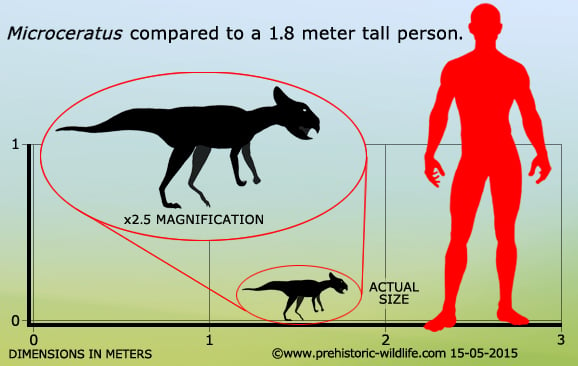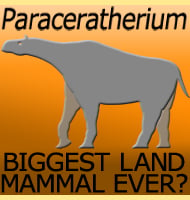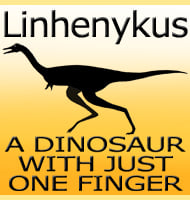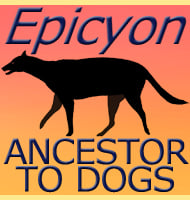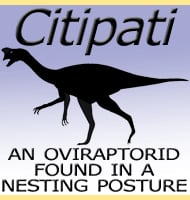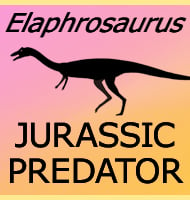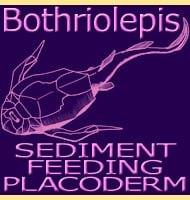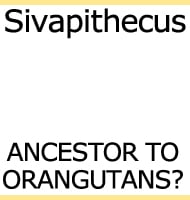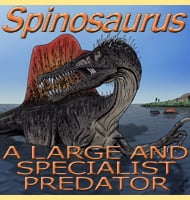In Depth
Microceratus was actually first named all the way back in 1953 as Microceratops from partial remains discovered in the Gobi Desert of Mongolia. Just over fifty years later however it was realised that Microceratops had already been used to name a genus of wasp, and so this dinosaur was renamed as Microceratus.
Microceratops was a very small ceratopsian dinosaur that was likely bipedal for greater mobility. A bipedal stance and small size would mean that Microceratops was a fairly agile and fast running dinosaur, important adaptations as Microceratus would likely have been hunted by small theropod dinosaurs such as dromaeosaurs and troodonts. The neck frill that grew from the back of the skull was fairly small and likely used for display more than defence.
Further Reading
- Fossil reptiles from Mongolia and Kansu. Reports from the Scientific Expedition to the North-western Provinces of China under Leadership of Dr. Sven Hedin. VI. Vertebrate Palaeontology 6. The Sino-Swedish Expedition Publication 37:1-113. - B. Bohlin - 1953. - Two ornithischian dinosaurs renamed: Microceratops Bohlin 1953 and Diceratops Lull 1905. - Journal of Paleontology 82 (2): 423. - O. Mateus - 2008.
